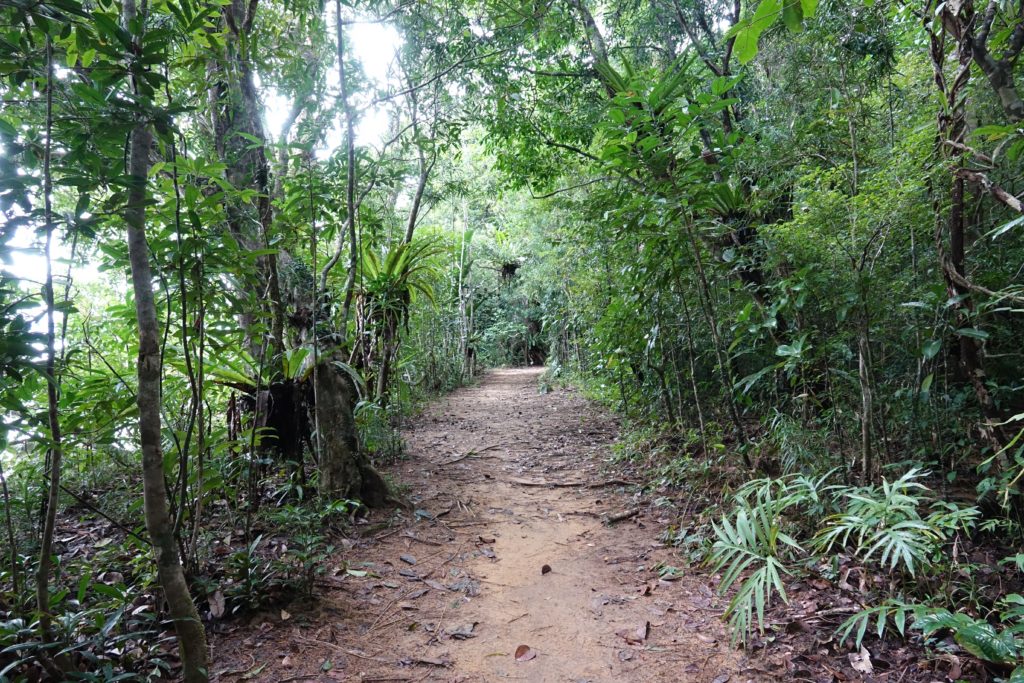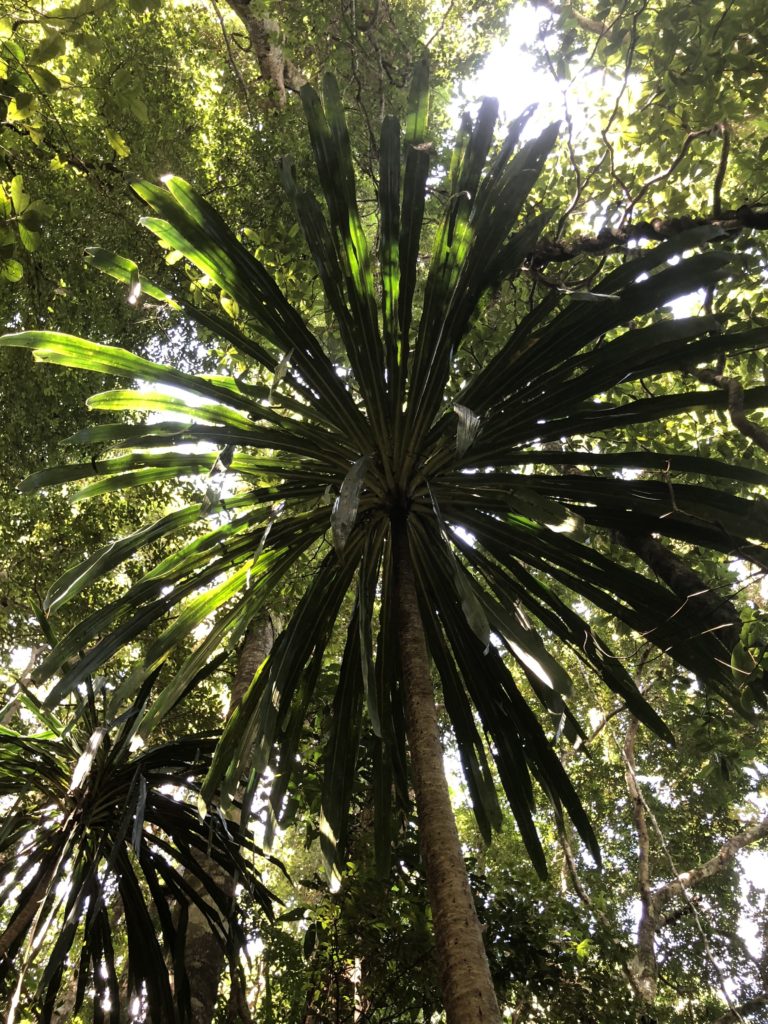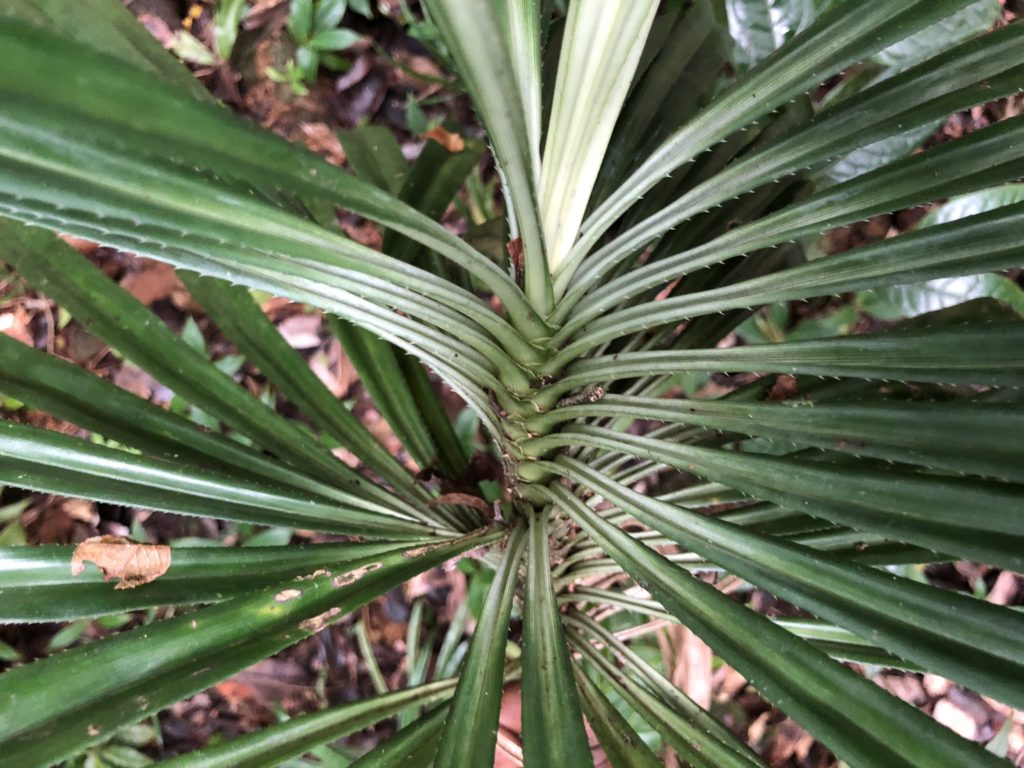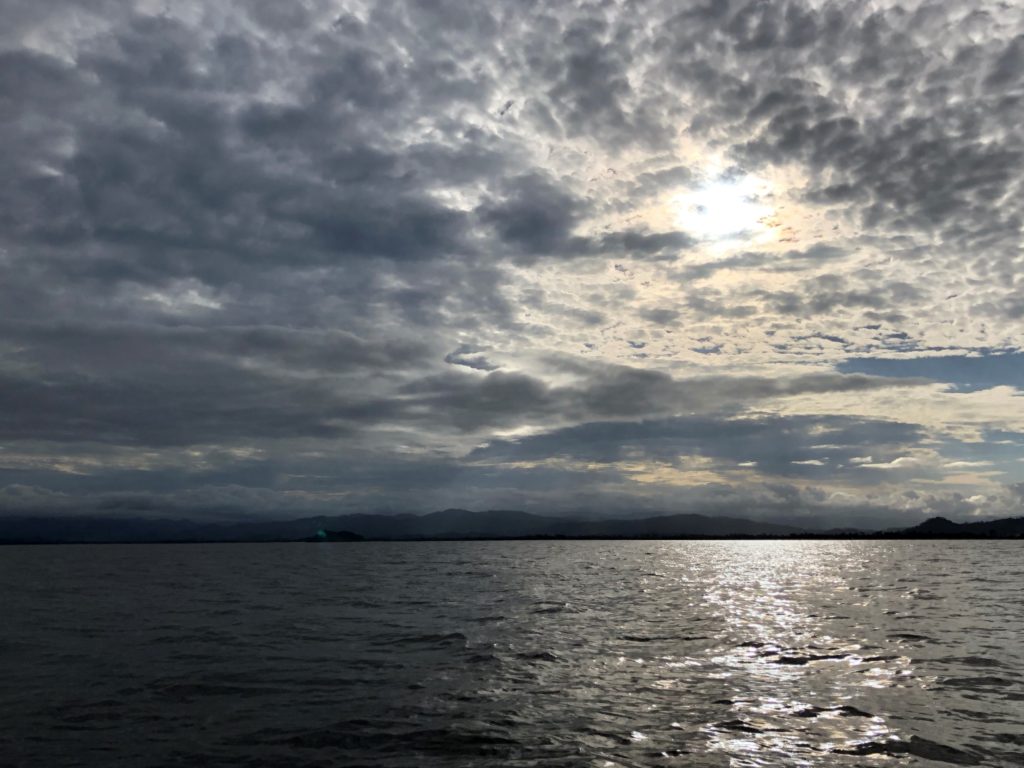Tropical paradise on an uninhabited small island. Dense rainforest, majestic trees, many unusual plants. Once home to pirates, today home to the strangest creature on earth: the aye-aye. This is Nosy Mangabe in the northeast corner of Madagascar.
Day 7 on Madagascar: Nosy Mangabe Special Reserve
The island is only 4 kilometers from Maroantsetra in the Indian Ocean. We reached it easily by boat in about 30 minutes. But not right away after we arrived to the Antainambalana river. Ginette, the owner of our hotel, who drove us to town and later accompanied us to the island, had to buy the entrance tickets for the visit.
When visiting a national park on Madagascar, it’s mandatory to take a local guide. While waiting for Ginette’s return, we met our guide, Emil, walked around the area, and enjoyed the views. Emil was very knowledgeable: gave us some history of the area, later tracked down the wildlife on the island, and pointed out beautiful plants.

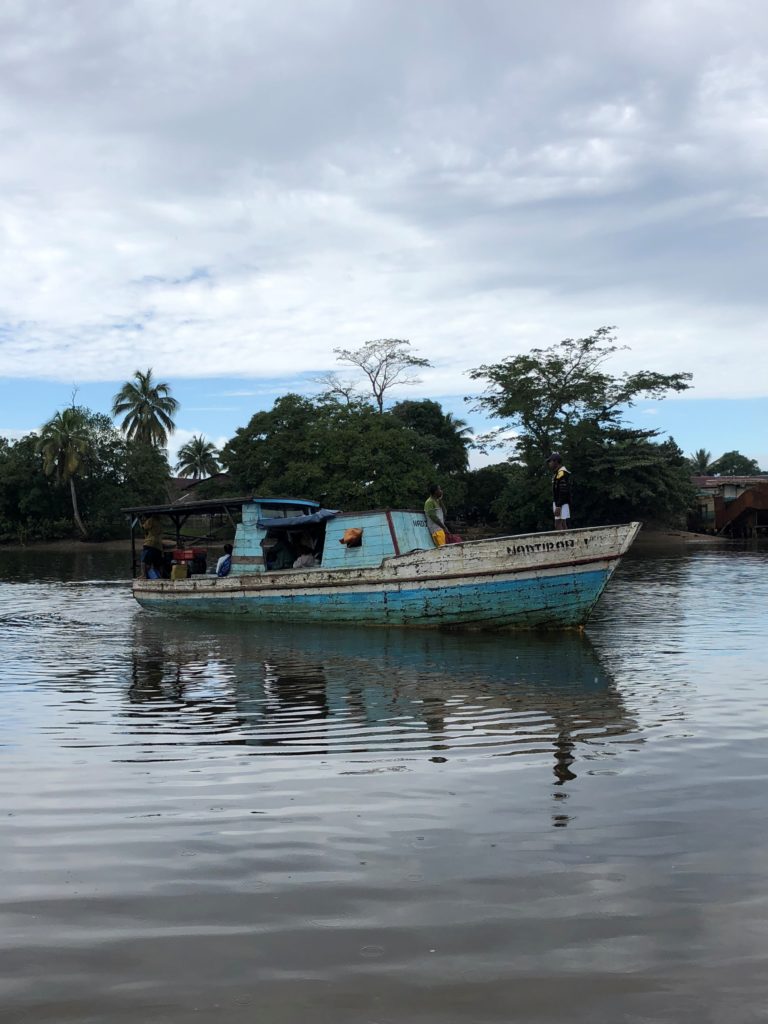
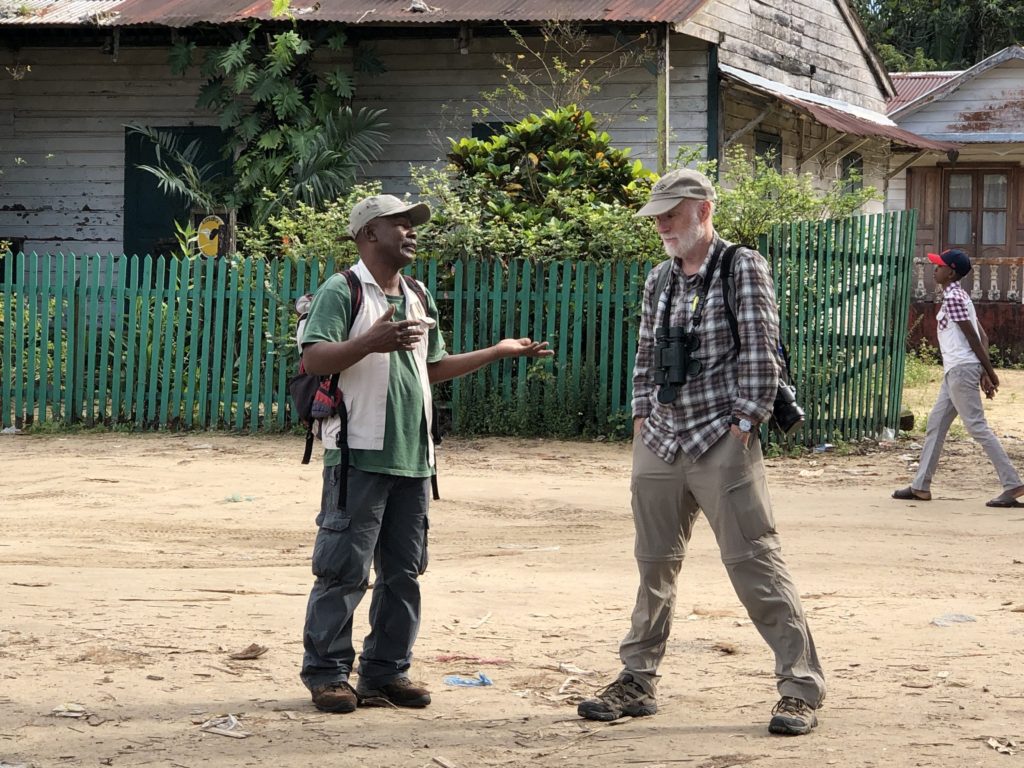 The island was designated as a special reserve in the sixties to serve as a refuge for the aye-aye. This nocturnal lemur has an elongated middle finger for extracting insects from trees. You must stay on the island overnight to get a chance to see one, but those chances are small. There are only about 20 of them on the island, and it’s extremely rare to see.
The island was designated as a special reserve in the sixties to serve as a refuge for the aye-aye. This nocturnal lemur has an elongated middle finger for extracting insects from trees. You must stay on the island overnight to get a chance to see one, but those chances are small. There are only about 20 of them on the island, and it’s extremely rare to see.
Around 10 a.m., we were finally on our way. Enjoyed the view by the water’s edge and noticed the fishermen in their boats on the open ocean.
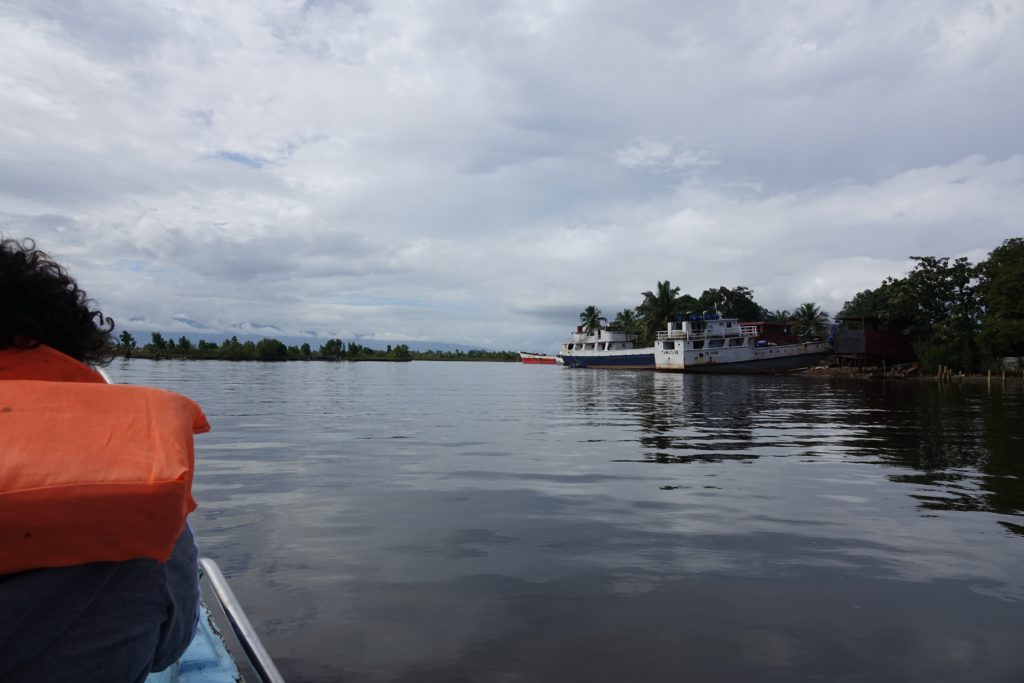
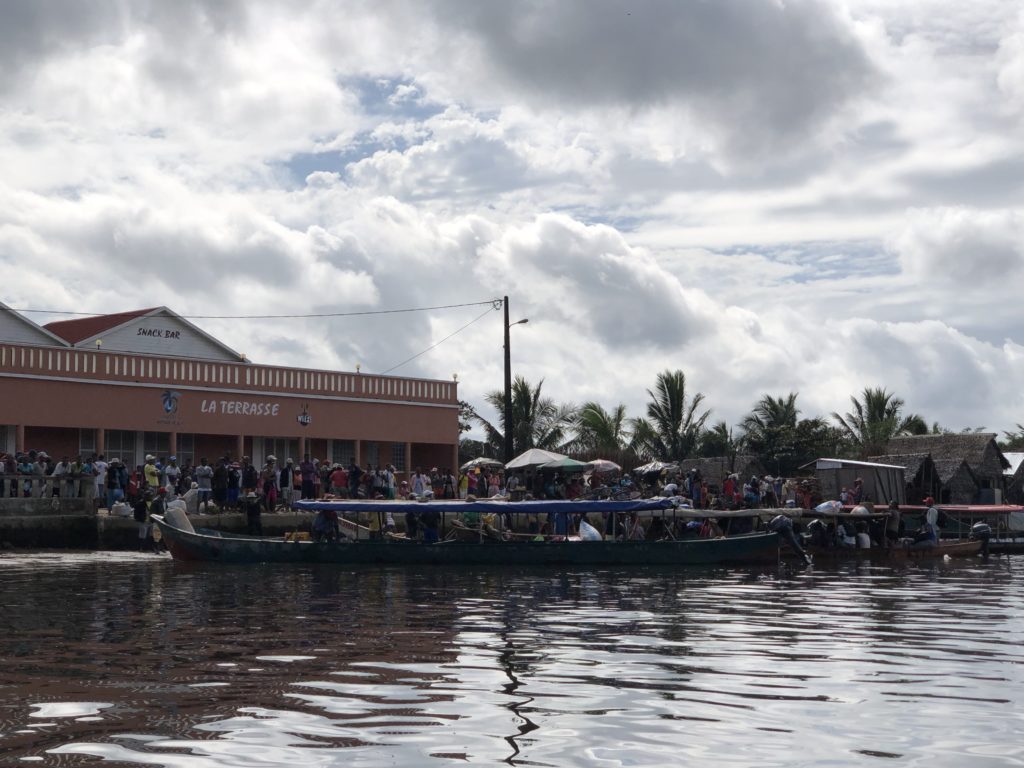

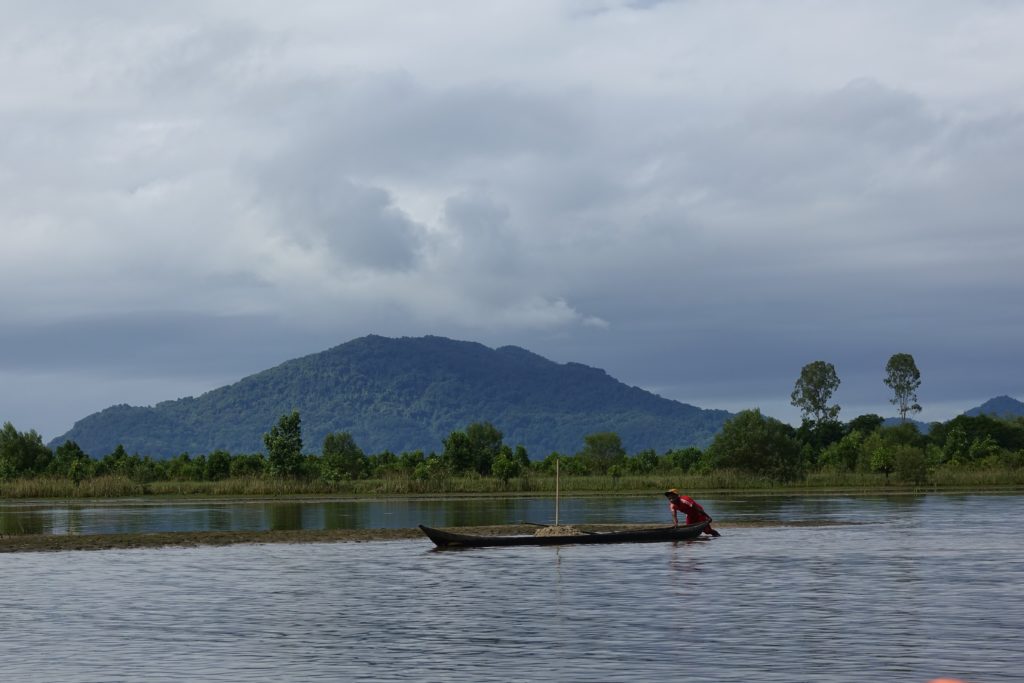
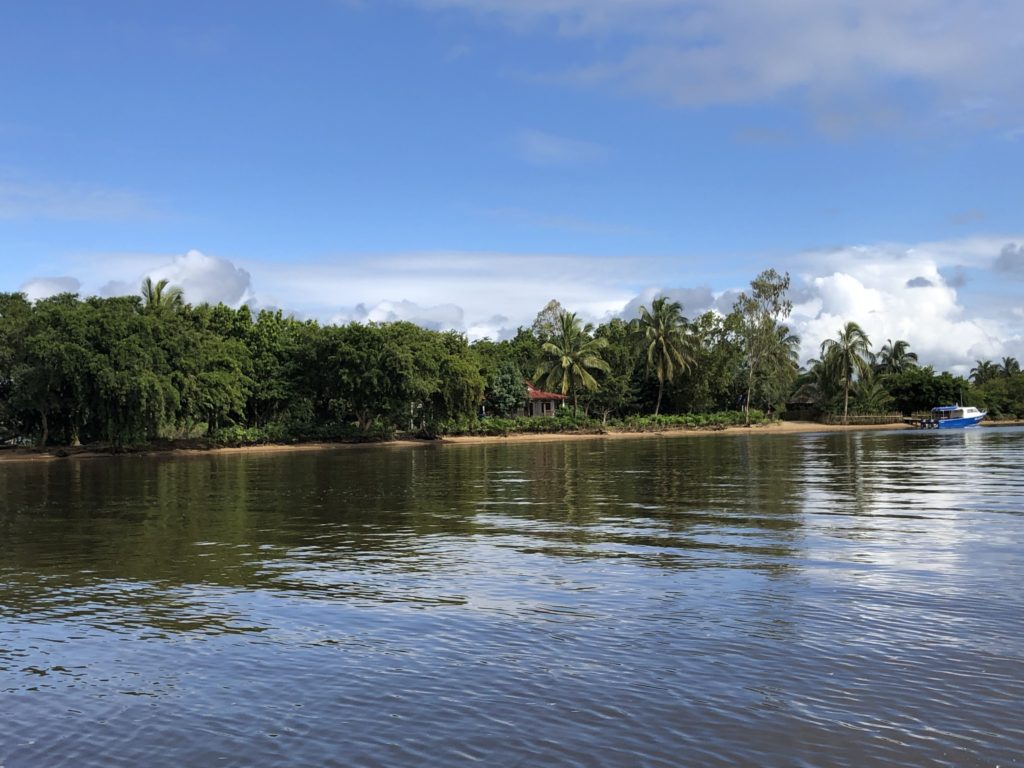
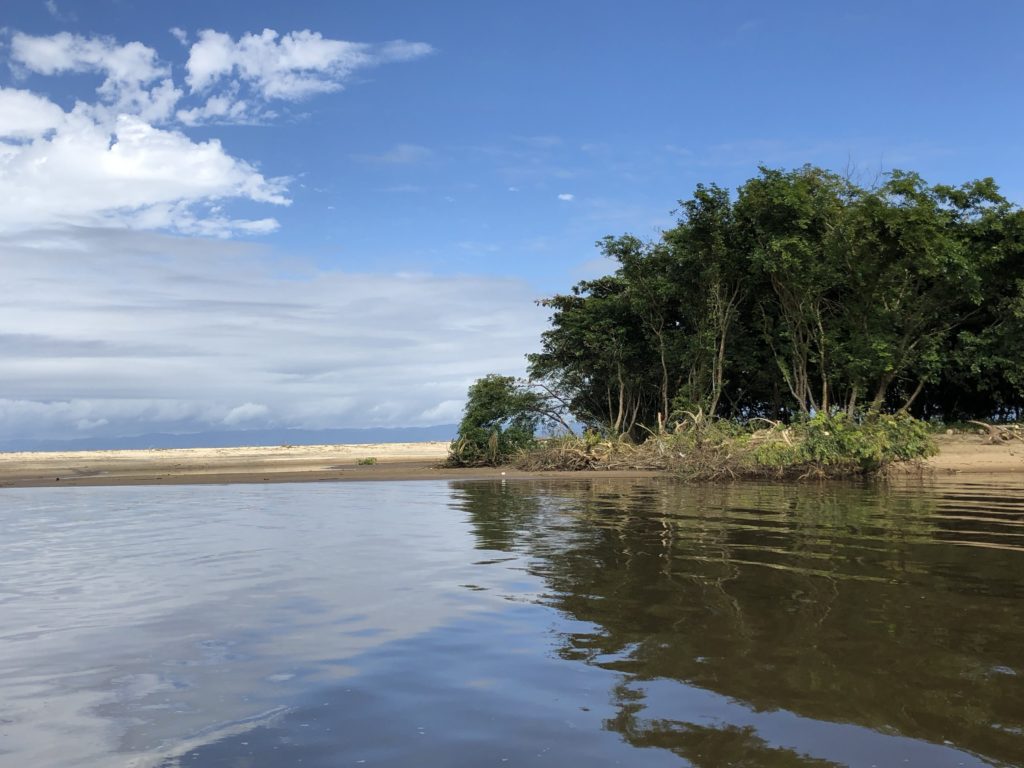
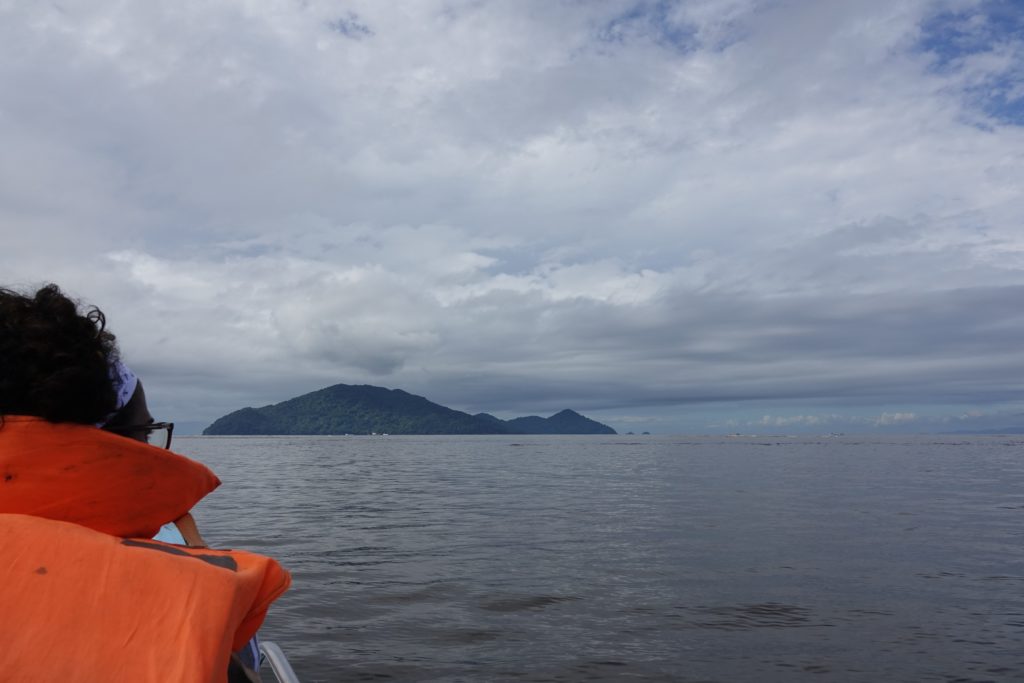
 As we got close to the island, it looked like the trees were growing out from the water – they were so close to the edge. We landed on a gorgeous small beach and equipped with our binoculars and cameras, started our hike on the well-maintained trails. We were delighted by the unspoiled nature. There were almost no tourists; we met only a few around the picnic area and none while hiking.
As we got close to the island, it looked like the trees were growing out from the water – they were so close to the edge. We landed on a gorgeous small beach and equipped with our binoculars and cameras, started our hike on the well-maintained trails. We were delighted by the unspoiled nature. There were almost no tourists; we met only a few around the picnic area and none while hiking.
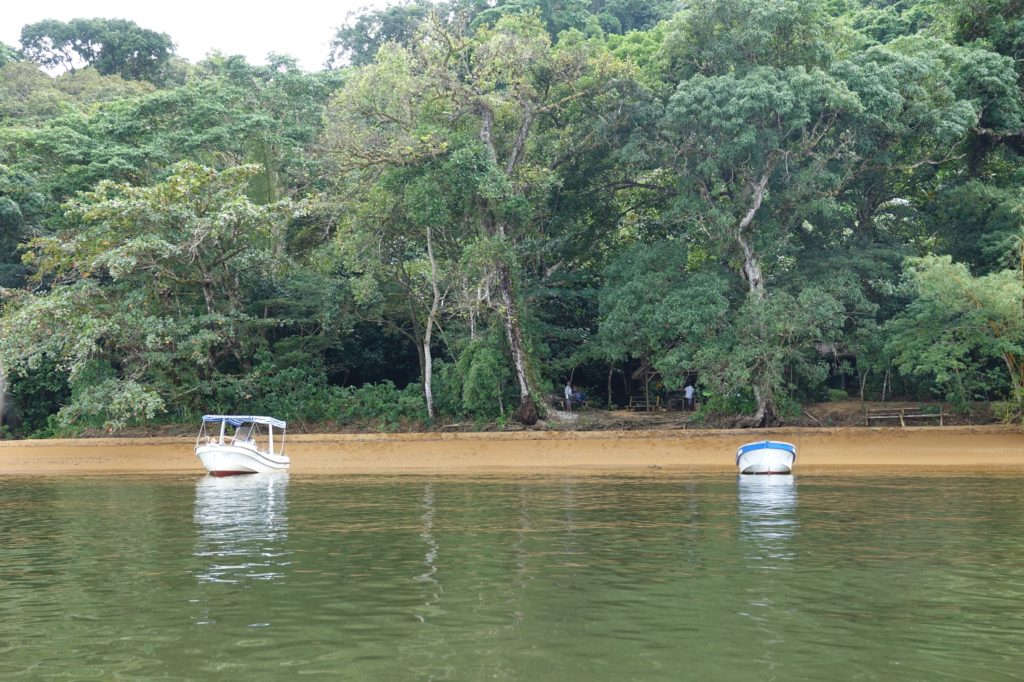
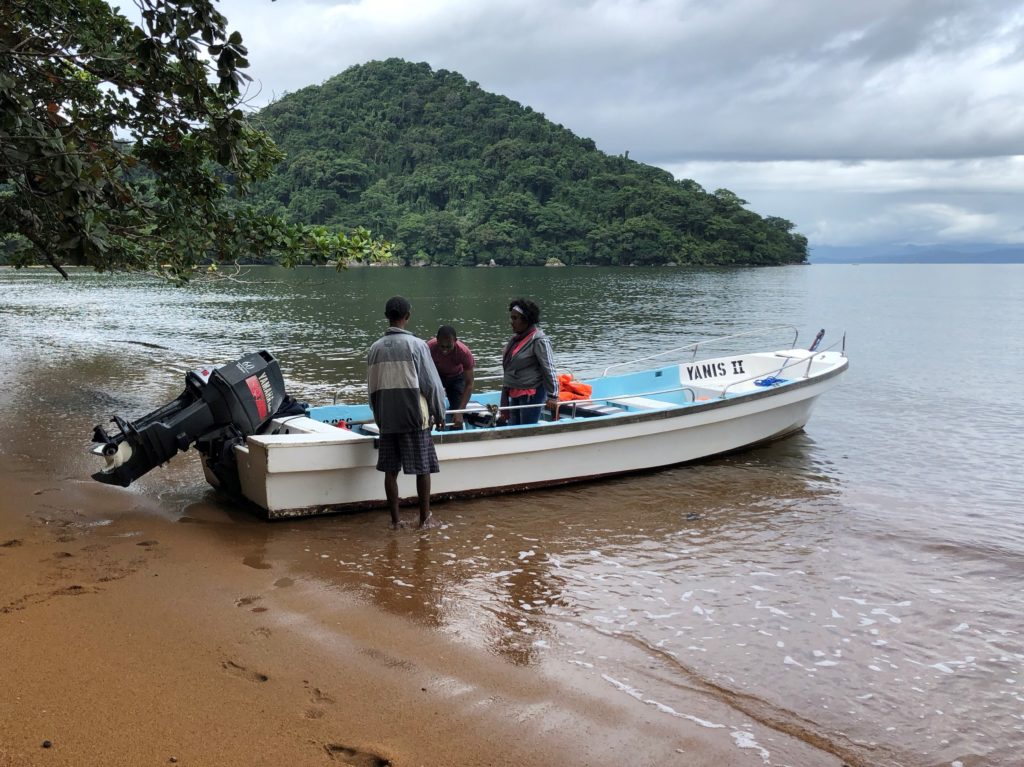

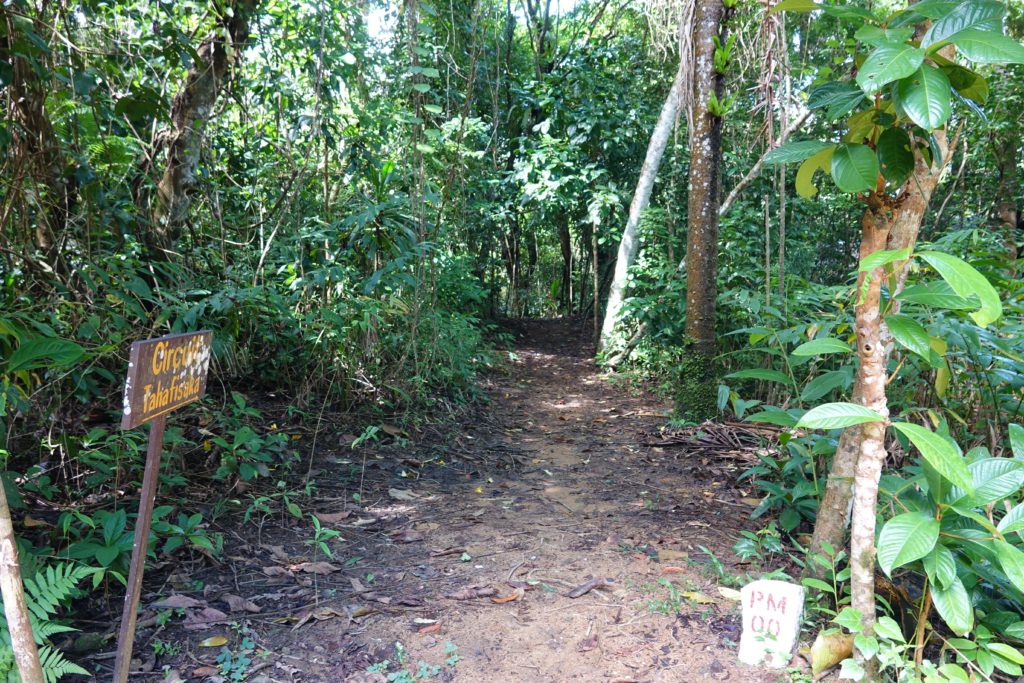
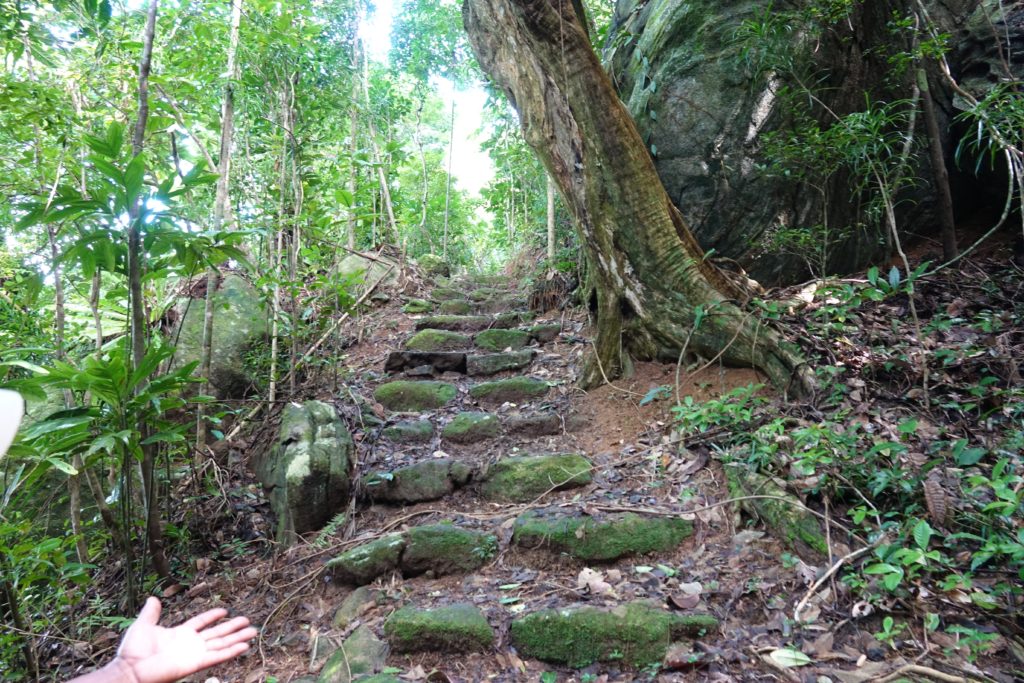
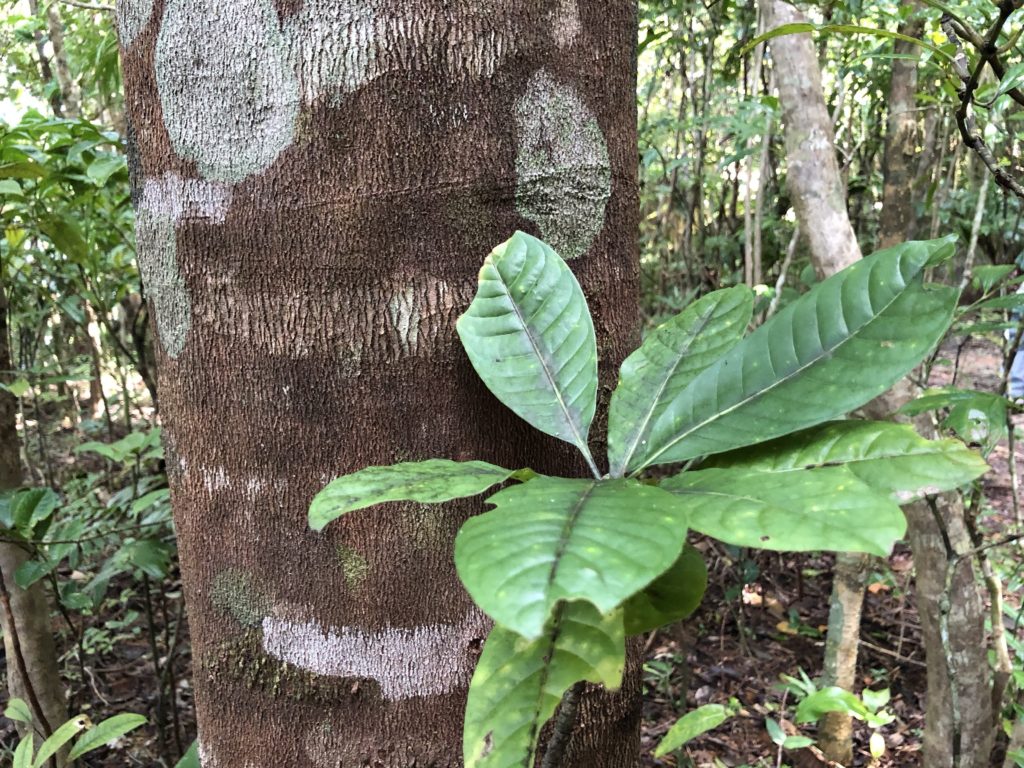

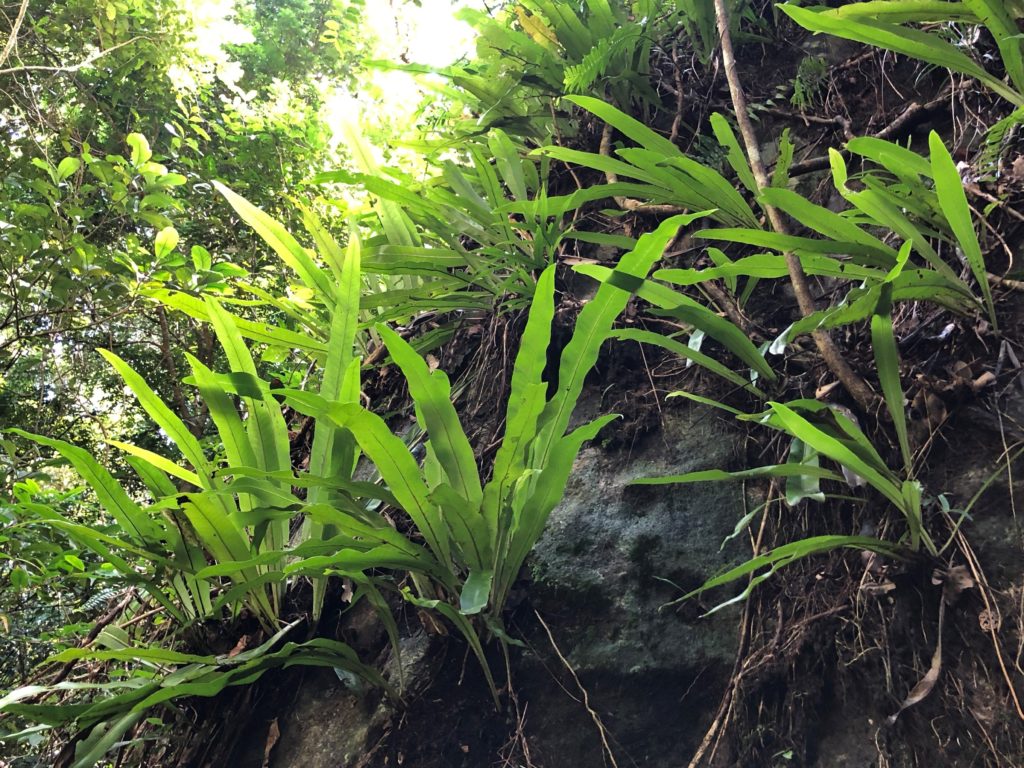
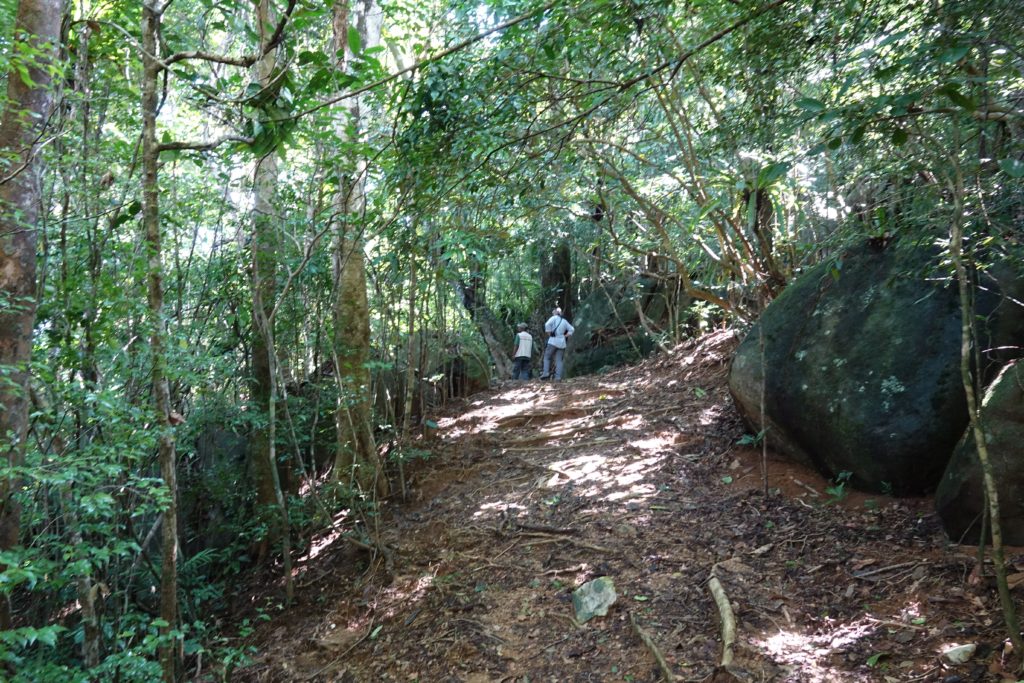 In Malagasy “nosy” means “island” and “mangabe” means “big blue” or “very beautiful.” It’s a beautiful island, indeed! Five square kilometers of undisturbed tropical rainforest, hilly land, waterfalls, moist and damp air.
In Malagasy “nosy” means “island” and “mangabe” means “big blue” or “very beautiful.” It’s a beautiful island, indeed! Five square kilometers of undisturbed tropical rainforest, hilly land, waterfalls, moist and damp air.

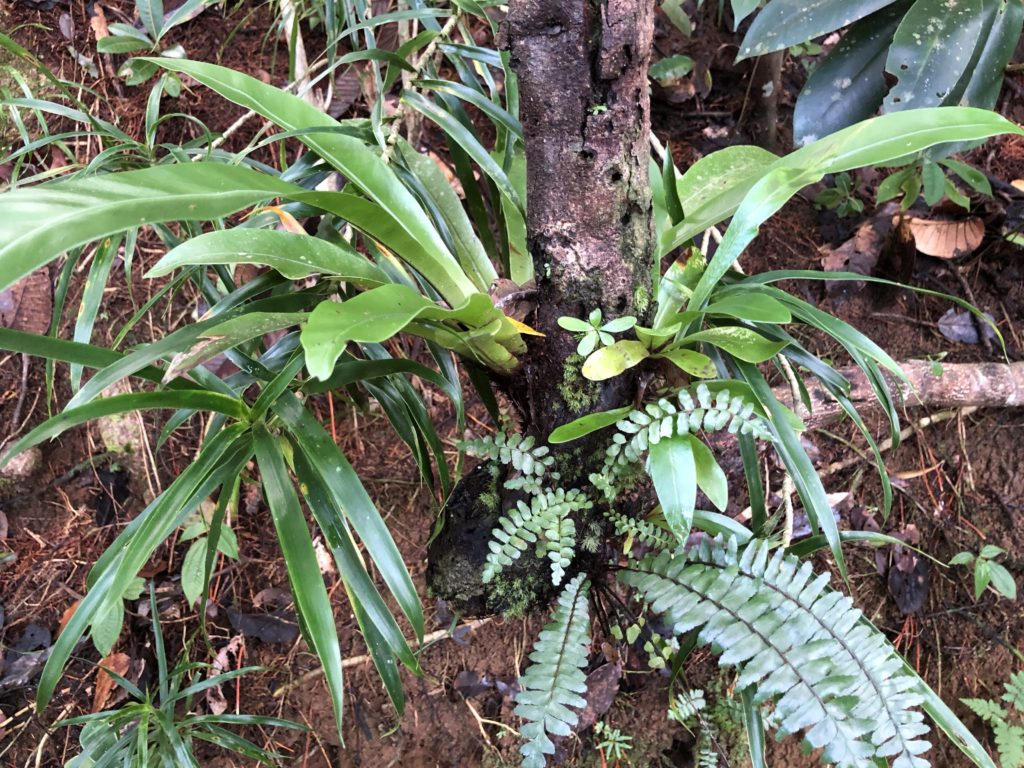

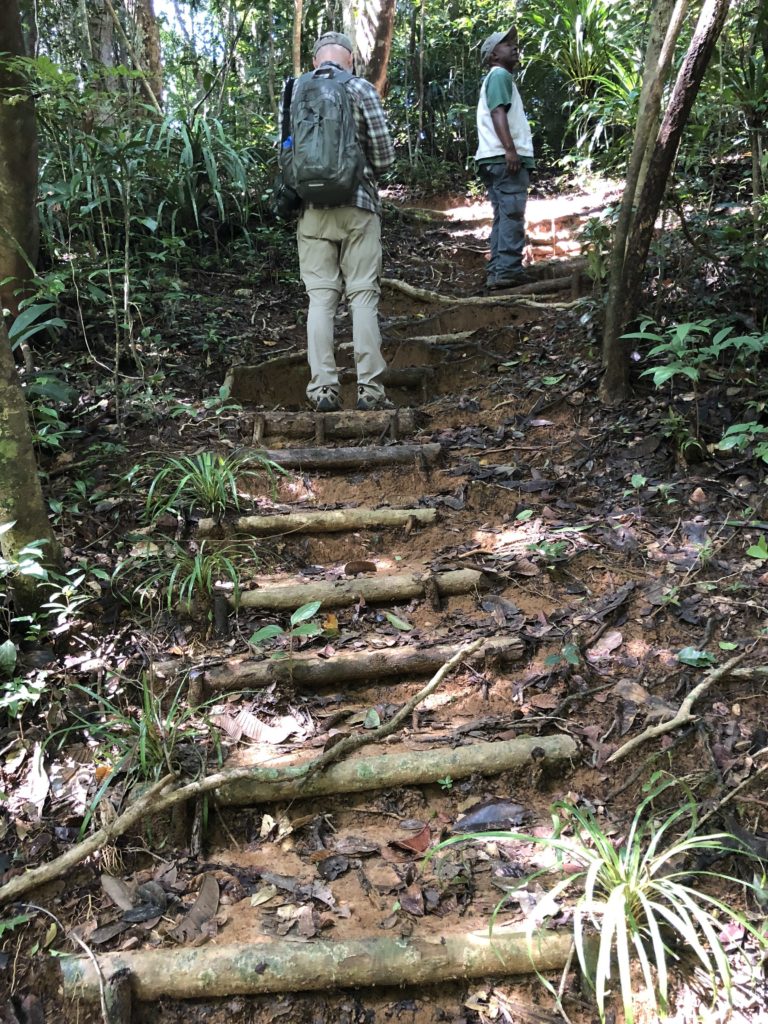
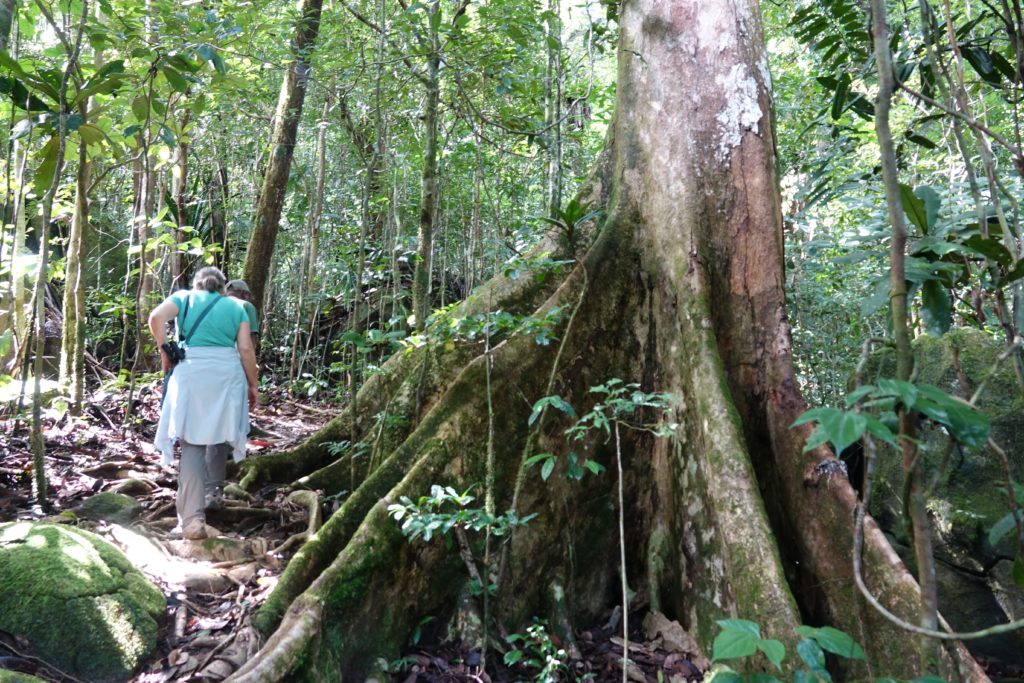
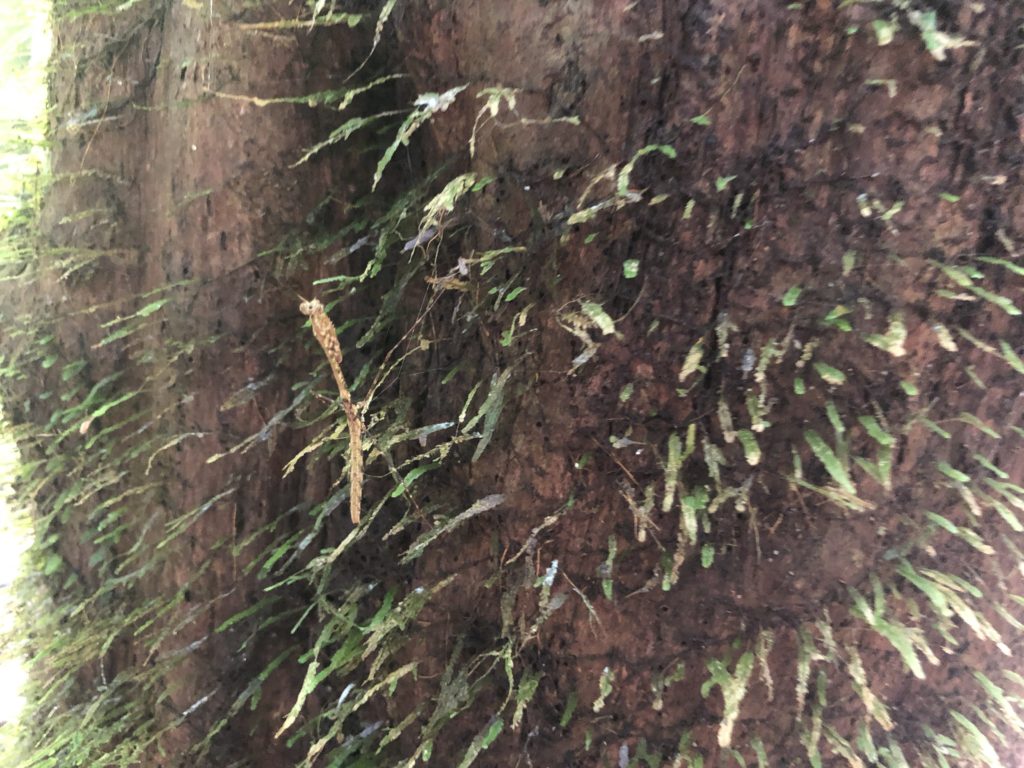

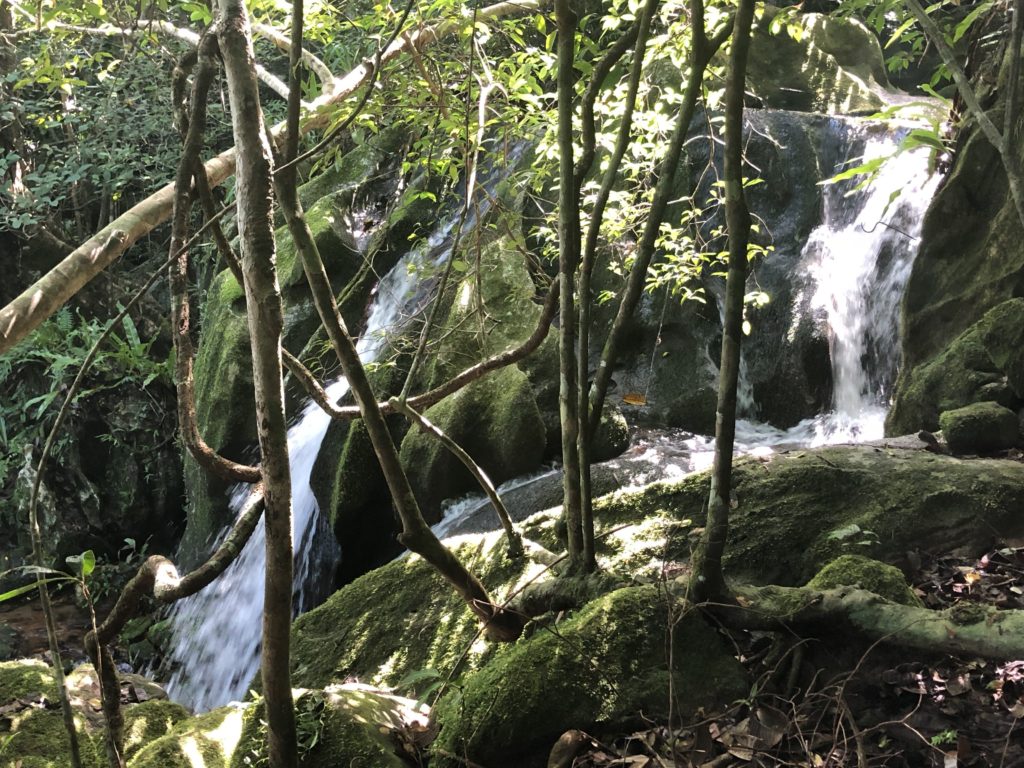 The island never had a human settlement but there are some ancient tombs on it, high in the forest. They belonged to the locals of a village on the mainland. We learned also that after the Dutch reached the island in the 17th century, it served as a quarantine for sick sailors.
The island never had a human settlement but there are some ancient tombs on it, high in the forest. They belonged to the locals of a village on the mainland. We learned also that after the Dutch reached the island in the 17th century, it served as a quarantine for sick sailors.

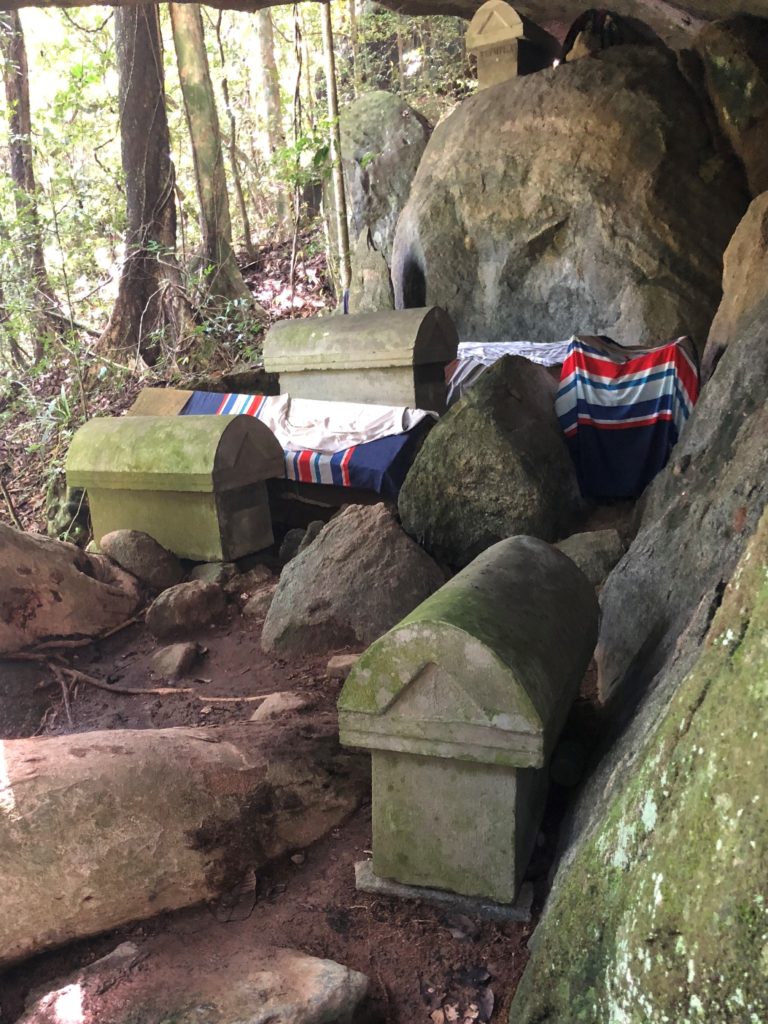 On Nosy Mangabe, you can see four different lemur species. Since we visited during the day, we didn’t have the chance to see the nocturnal ones (the aye-aye and the mouse lemur), but we spotted the black-and-white ruffled lemurs high in the trees and the white fronted brown lemurs around the picnic area.
On Nosy Mangabe, you can see four different lemur species. Since we visited during the day, we didn’t have the chance to see the nocturnal ones (the aye-aye and the mouse lemur), but we spotted the black-and-white ruffled lemurs high in the trees and the white fronted brown lemurs around the picnic area.


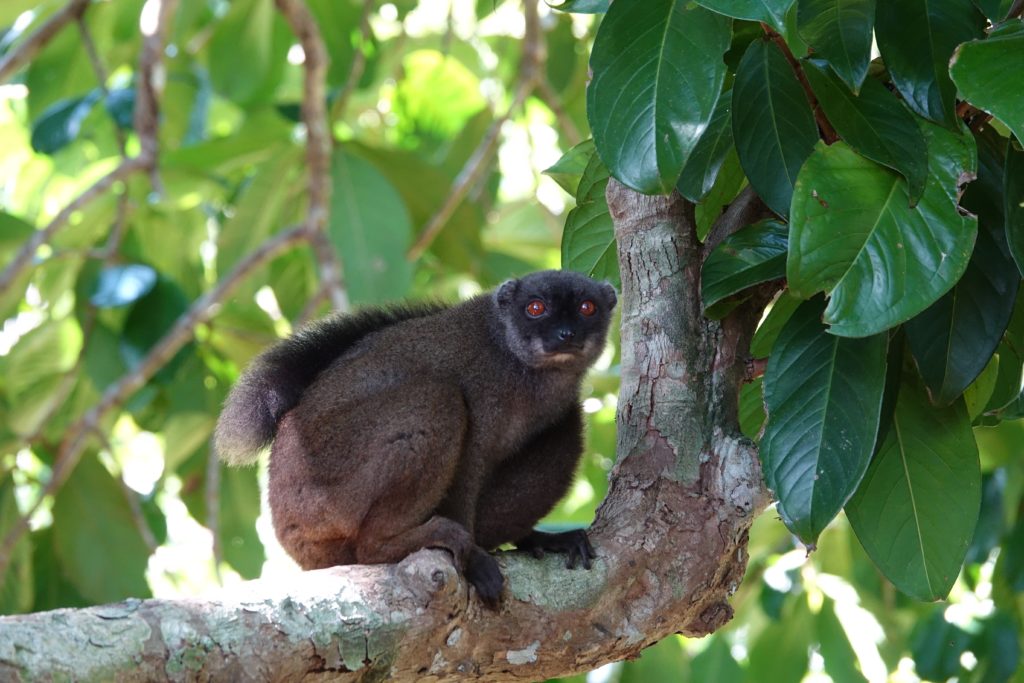 Camouflaged leaf-tailed geckos, butterflies, unique frogs (like the yellow-backed Mantella), and tree crabs were also on display.
Camouflaged leaf-tailed geckos, butterflies, unique frogs (like the yellow-backed Mantella), and tree crabs were also on display.
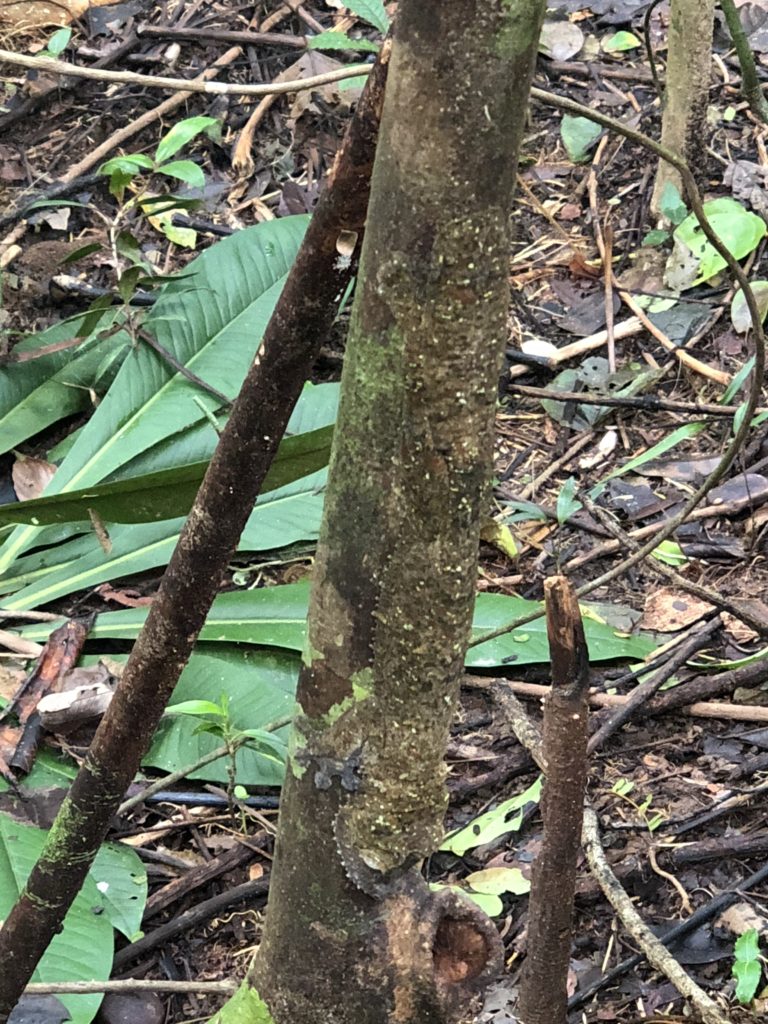
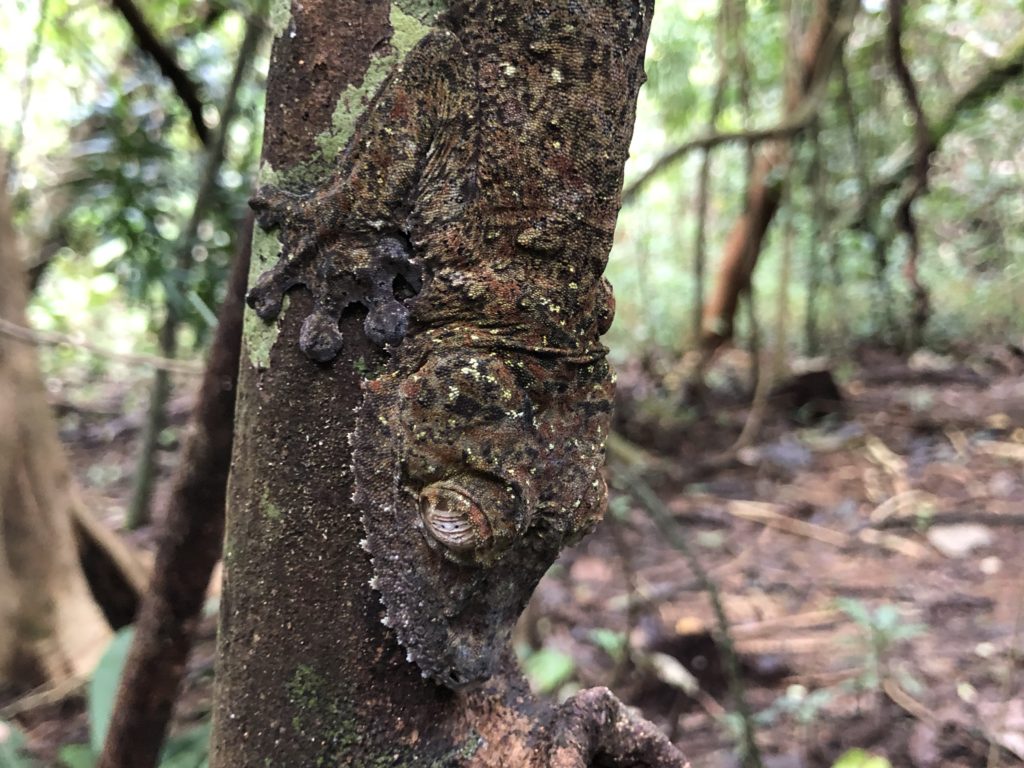
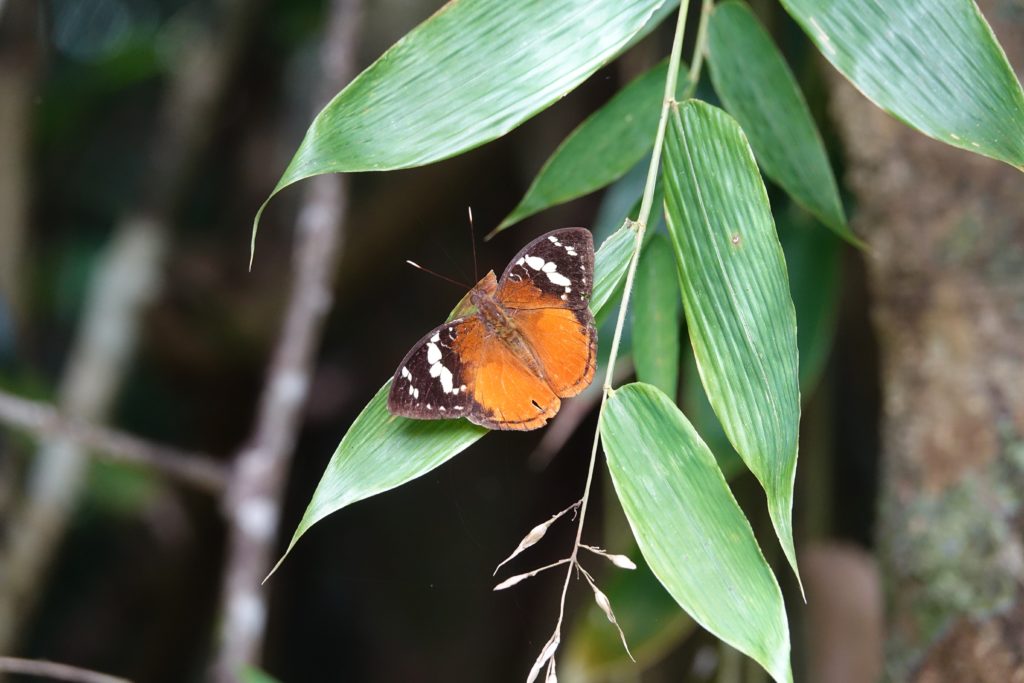

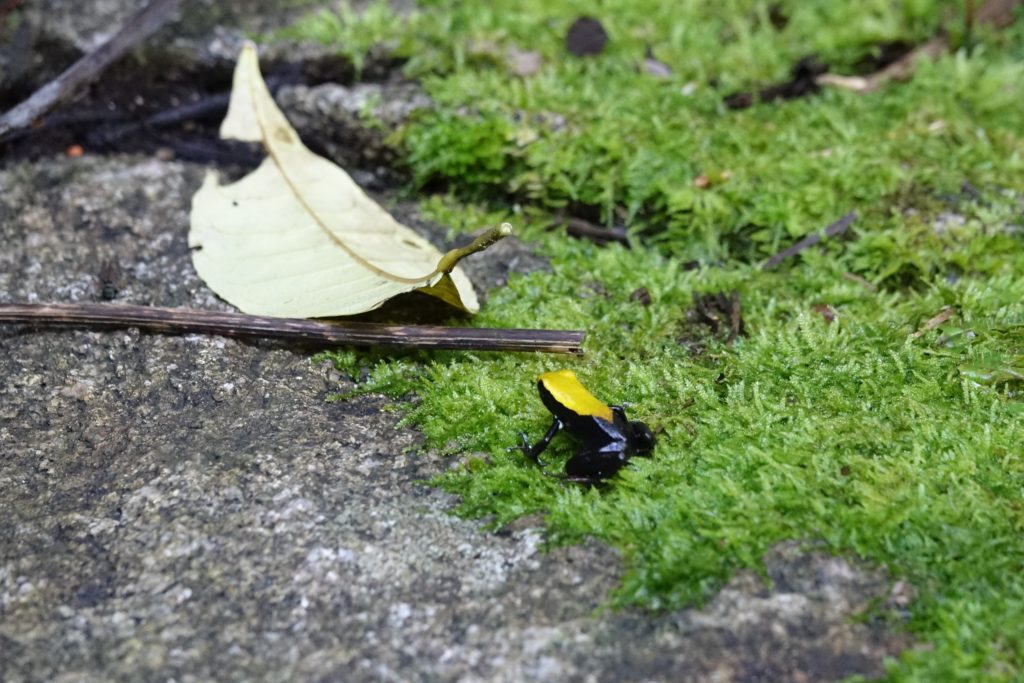
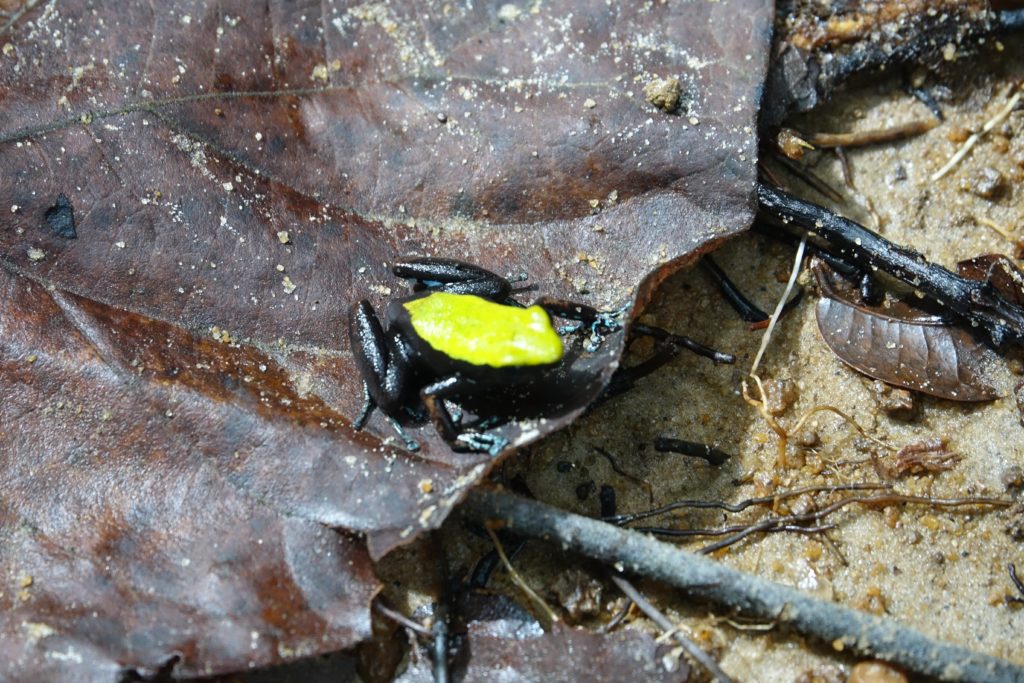
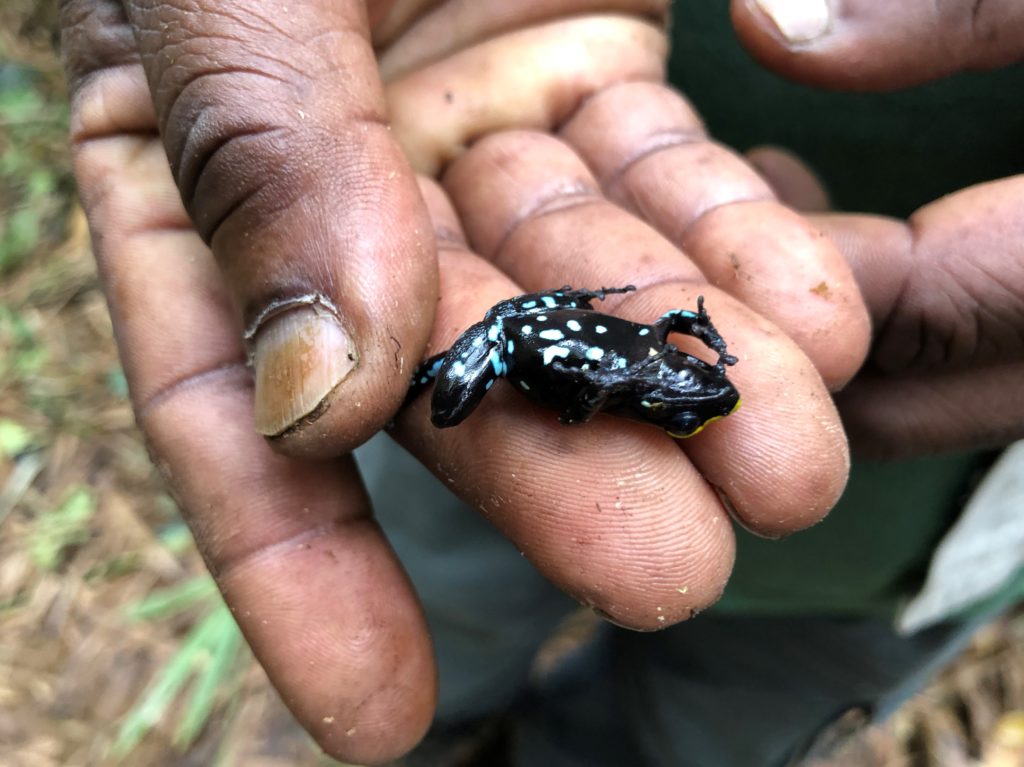
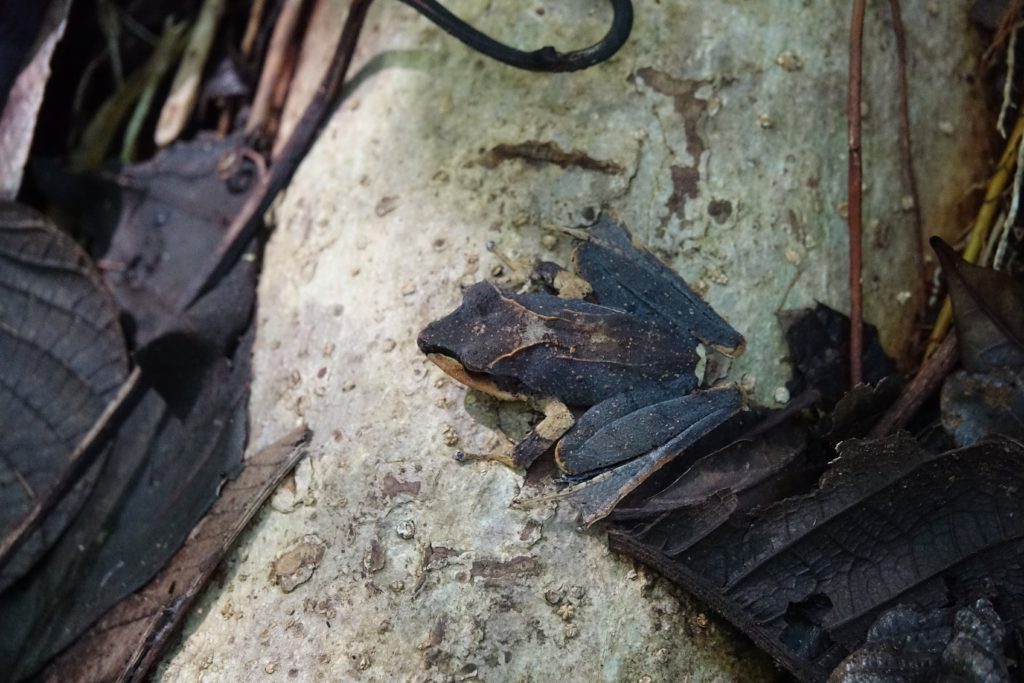
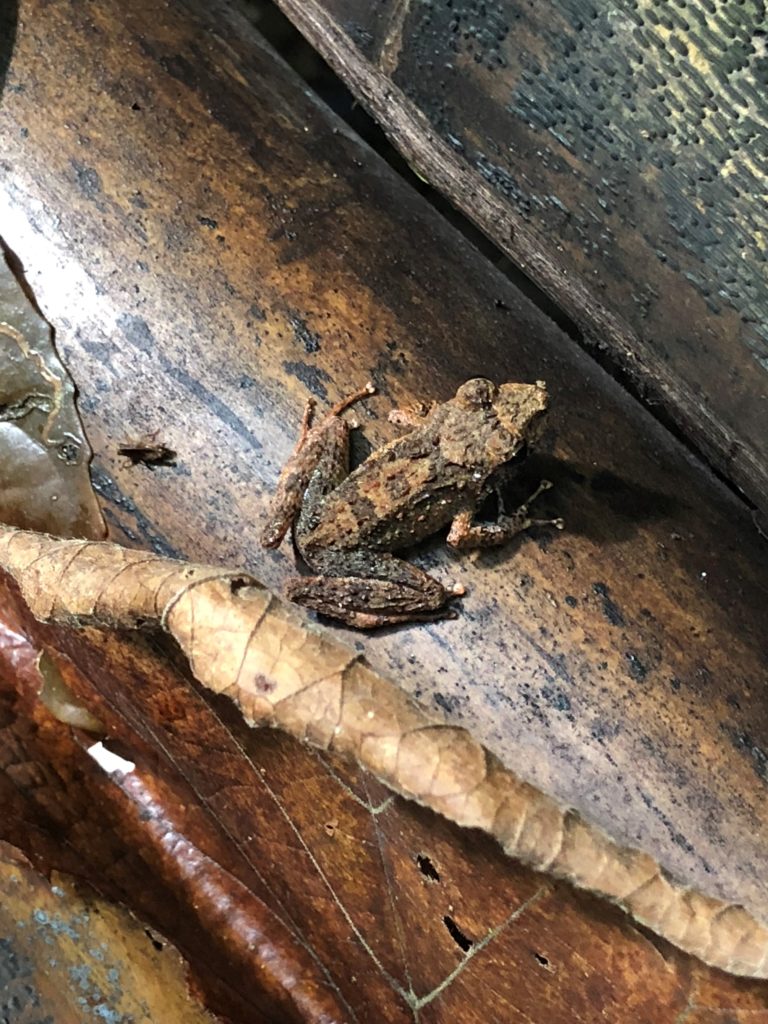
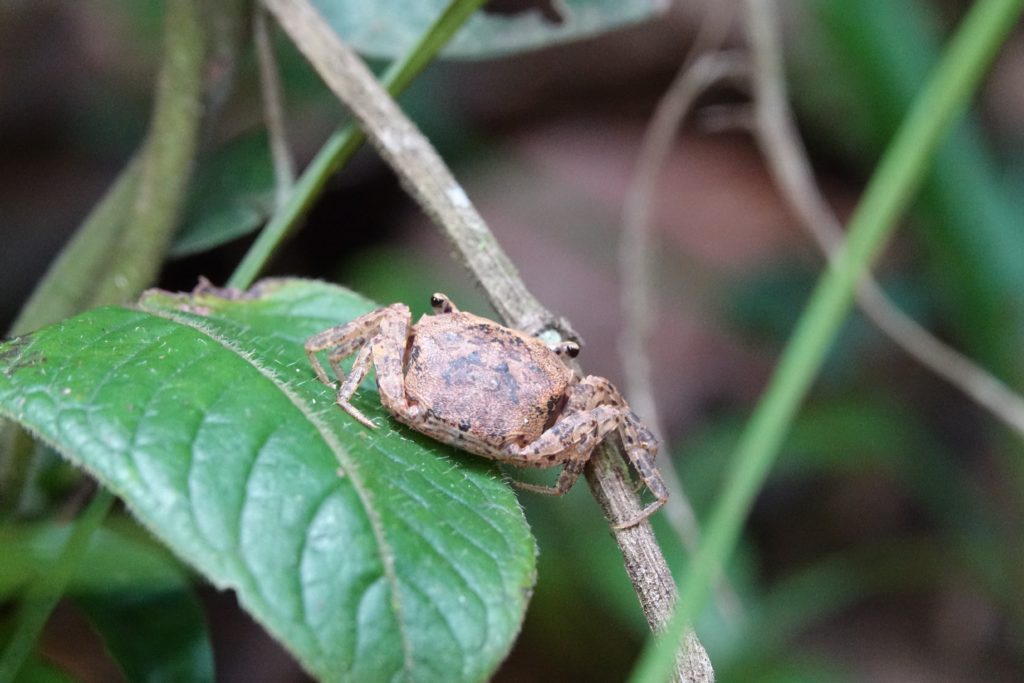 The only building here is for island guards and research biologists. There is a small kitchen in it where Ginette cooked a delicious chicken lunch for us. We dined at a wooden table on the campsite, close to the beach, accompanied by curious lemurs. They were happy with stolen banana peels.
The only building here is for island guards and research biologists. There is a small kitchen in it where Ginette cooked a delicious chicken lunch for us. We dined at a wooden table on the campsite, close to the beach, accompanied by curious lemurs. They were happy with stolen banana peels.
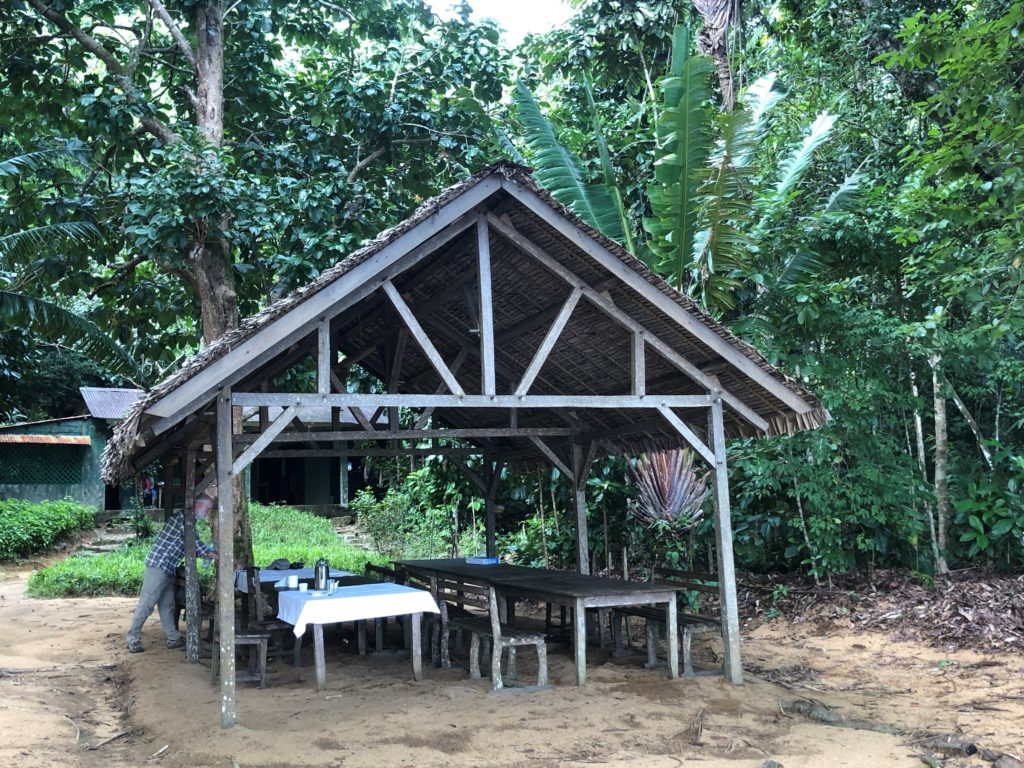
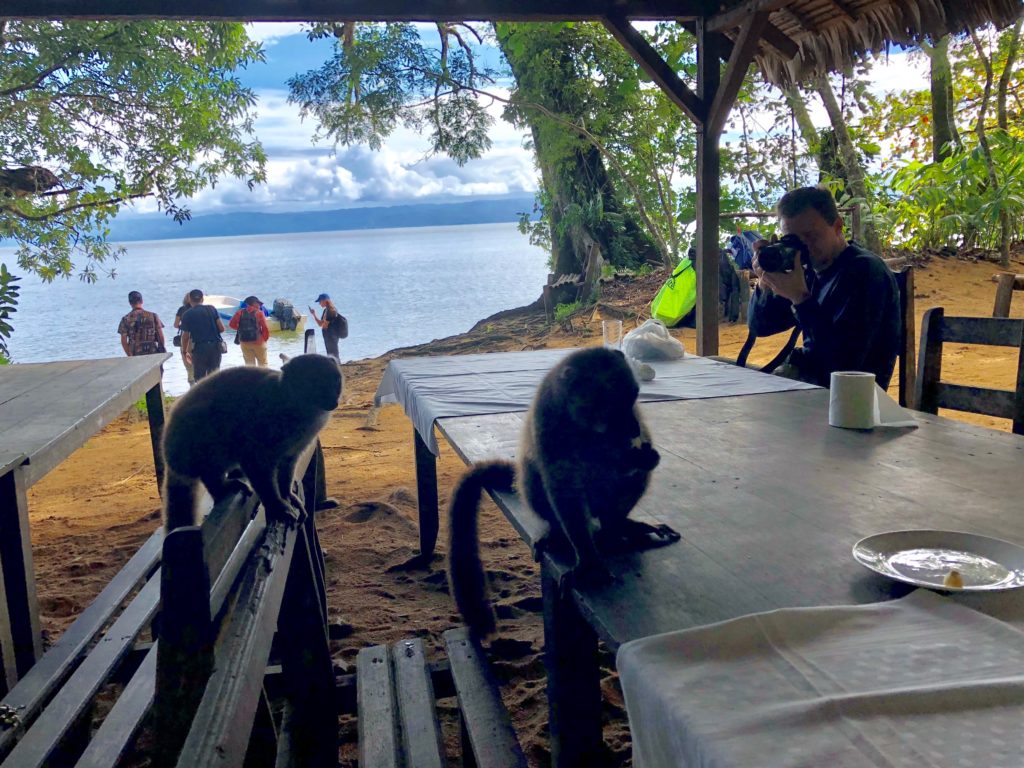
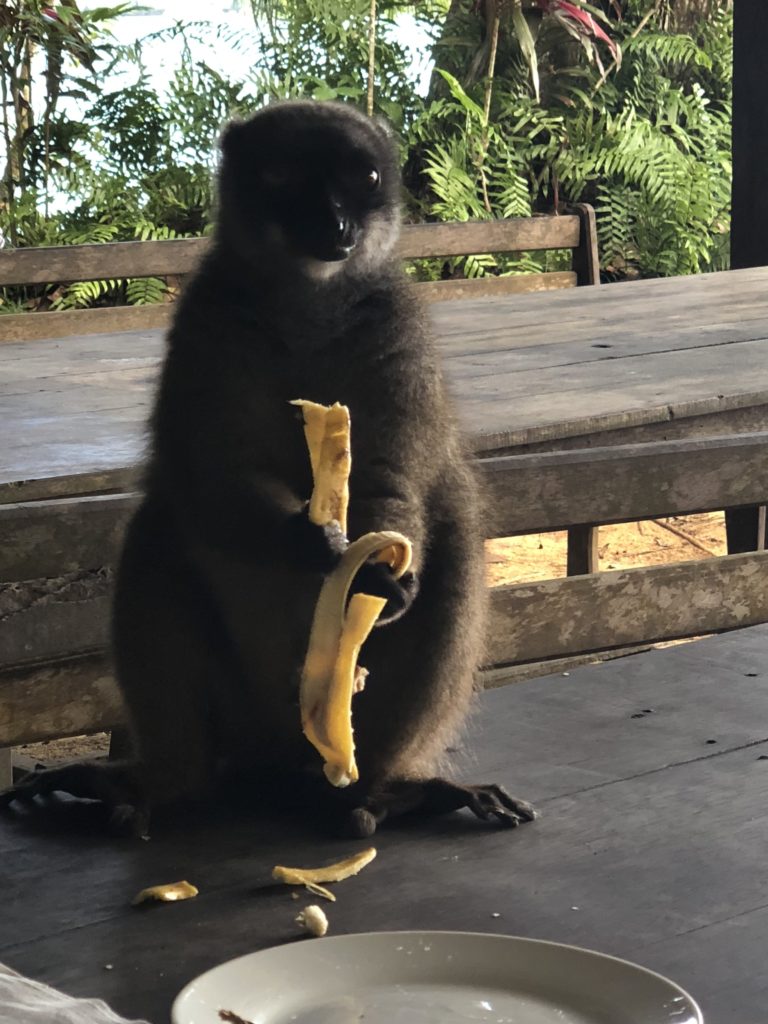 After lunch, we hiked the flat part of the island, parallel to the beach. An easy walk; an opportunity to marvel about the beauty of the plants, then back to Maroantsetra, leaving behind this enchanted little island.
After lunch, we hiked the flat part of the island, parallel to the beach. An easy walk; an opportunity to marvel about the beauty of the plants, then back to Maroantsetra, leaving behind this enchanted little island.

